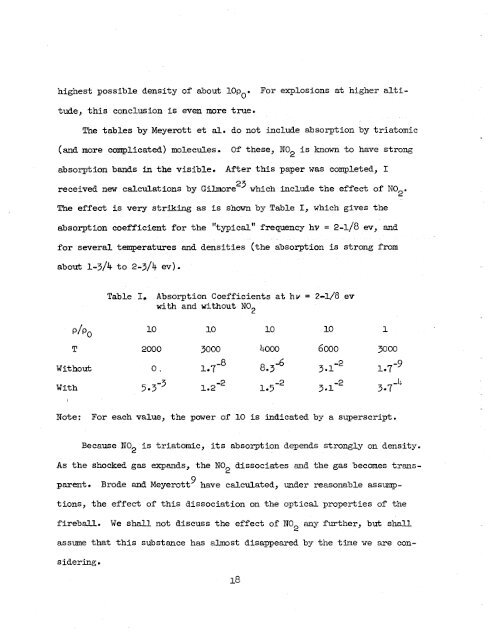Theory of the Fireball
Theory of the Fireball
Theory of the Fireball
Create successful ePaper yourself
Turn your PDF publications into a flip-book with our unique Google optimized e-Paper software.
highest possible density <strong>of</strong> about lop For explosions at nigher alti-<br />
0.<br />
tude, this conclusion is even more true.<br />
Tne tables by Meyerott et al.. do not include absorption by triatomic<br />
(and more complicated) molecules, Of <strong>the</strong>se, NO2 is known to have strong<br />
absorption bands in <strong>the</strong> visible. After this paper was completed, I<br />
received new calculations by Gilmoreg3 which include <strong>the</strong> effect <strong>of</strong> U02.<br />
The effect is very striking as is shown by Table I, which gives <strong>the</strong><br />
absorption coefficient for <strong>the</strong> "typical" frequency hv = 2-1/8 ev, and<br />
for several temperatures and densities (<strong>the</strong> absorption is strong from<br />
about 1-314 to 2-3/4 ev) .<br />
PIP.<br />
T<br />
Without<br />
With<br />
Table I. Absorption Coefficients at hv = 2-l/8 ev<br />
with and without NO2<br />
10 10 10 10 1<br />
Note: For each value, <strong>the</strong> power <strong>of</strong> 10 is indicated by a strperscript.<br />
Because NO is triatomic, its absorption depends strongly on density.<br />
2<br />
As <strong>the</strong> shocked gas expands, <strong>the</strong> NO2 dissociates and <strong>the</strong> gas becomes trans-
















